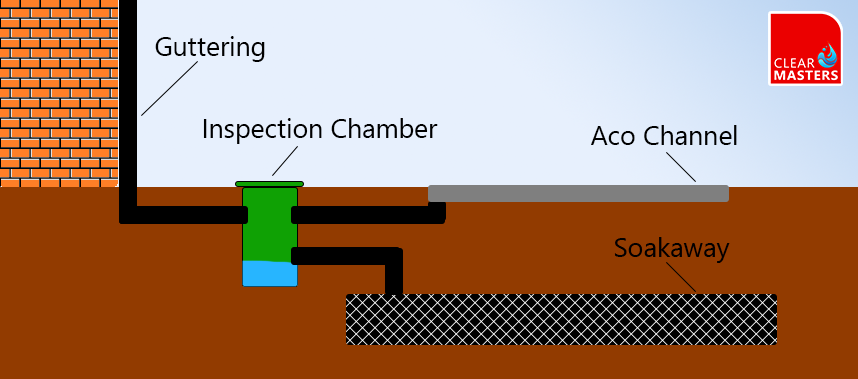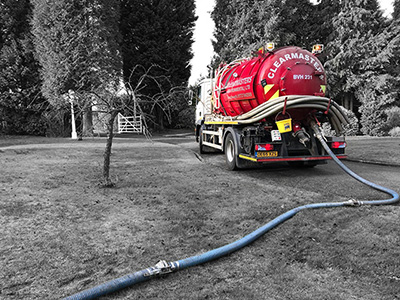Soakaways are an essential component of any drainage system, as they provide an effective means of removing excess water from the surface and groundwater levels. These systems are typically constructed in gardens, driveways, and other low-lying areas to prevent waterlogging and flooding. To ensure that they continue to function optimally, regular soakaway maintenance is required.

A soakaway can be a crate system or, less commonly these days, a pit filled with gravel and stones that provides a permeable surface for water to drain into the ground. The water is then naturally filtered through the surrounding soil and rocks and eventually re-enters the groundwater table. Soakaways are commonly used in areas where the soil structure does not allow for traditional drainage systems, such as surface water drainage ditches or connected to mains drainage.
Soakaway maintenance involves two simple steps to ensure that your system is functioning as it should.
Remove Debris: The first step in soakaway maintenance is to remove any debris that may have accumulated in the soakaway. This can include leaves, twigs, and other organic matter. Clearing this debris will ensure that water can flow freely through the system.
Check the Structure: Inspect the structure of the soakaway to ensure that it's in good condition. Check for cracks, breaks, or other signs of damage that could cause water to leak out. If you find any damage, it's important to repair it as soon as possible to prevent waterlogging and potential damage to your property.
Yes, Soakaways are designed to last for many years and are generally low maintenance. However, they can become clogged over time, reducing their effectiveness and potentially causing problems with waterlogging. This can happen when leaves, dirt, and other debris accumulate in the soakaway, blocking the flow of water. If left unattended, this can result in water backing up and potentially causing damage to your property.

Quite simply, we are the best!
We are always on hand, whether it be a routine visit, or an emergency call out to offer you the very best in cesspit emptying. We pride ourselves on having a modern fleet of vehicles containing the highest tech equipment to ensure that we can provide you with the high levels of reliability and efficiency that we constantly achieve.
Our friendly and knowledgeable office team, are always available to discuss or advise on any of your cesspit requirements or simply to schedule in your cesspit emptying at a convenient time and date that suits you.
On site, our team of dedicated, friendly and fully trained engineers will ensure that your emptying is carried out to the highest standard with minimal disruption. Our engineers are always willing and fully encouraged to spend time answering any questions you may have regarding your sewage system.
Don't fancy opening the lid and taking a look? We don't blame you! Slow drains, nasty odours and gurgling pipes are the most common signs. We can check if your not sure.
Your drains will stop flowing and back up, eventually it will overflow and make a mess of your garden and damage the surrounding environment.
You need to think about the capacity of the tank, maybe a good time to look at having a septic tank or treatment plant installed whist you're at it.
A sign of this will be pooling water, ground dipping and the grass around the cesspit growing faster than the rest. In this scenario its best to get our team out to inspect/repair.
This depends on the land/space you have but, in most cases, yes! Outlaying for a lower maintenance system could save you a lot in the long run!
You don't need to register your cesspit. That said, if you plan to install a new one you will need planning permission and building regulations approval.